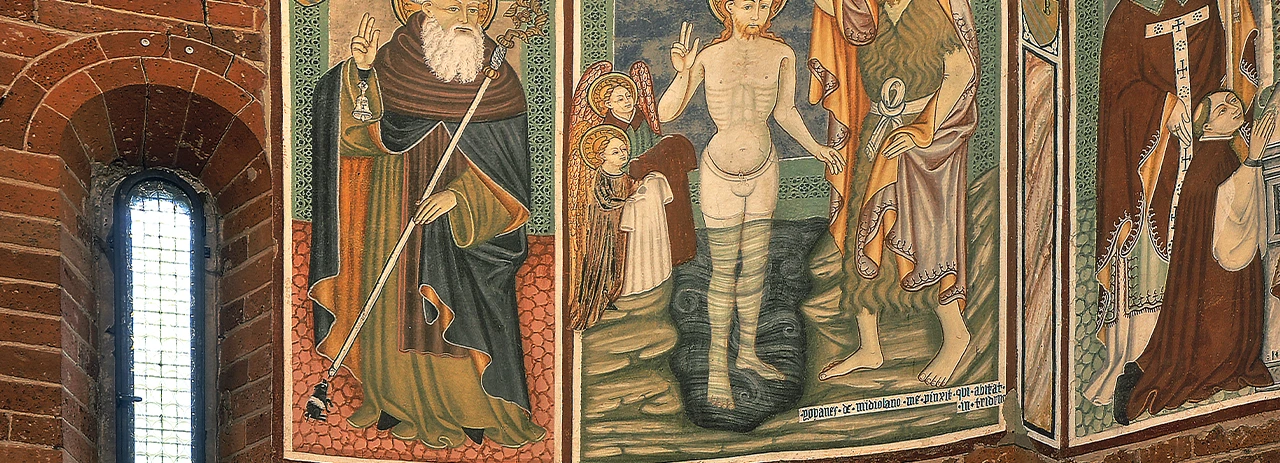Mortara PV
Abbey of Sant’Albino
In October 773, Charlemagne’s Frankish army clashed fiercely with the Lombards near Mortara (Pulchra Silva). The losses were heavy for both sides and, according to tradition, the Carolingian paladins Amico and Amelio also lost their lives on the battlefield. A legend intertwined with the centuries-old history of the Abbey of Sant’Albino narrates that the two knights were buried in separate tombs but were later found in the same tomb, right on the site where the religious structure was built. Originally, in the area of the abbey there was a church dedicated to Sant’Eusebio di Vercelli, dating back to the 5th century. Charlemagne refounded it in 774 as a cemetery for the victims of the battle of Pulchra Silva. It is said that Bishop St. Albinus Alcuin founded a monastery here, where he ordained deacons and priests who were his disciples. To honor their master, his students dedicated the monastery to St. Albinus of Angers, a bishop who died in 550. The abbey was renovated in the 11th century and the bell tower was rebuilt in the 13th century after being destroyed in 1253. In the 15th century, the monastery’s assets were converted into a Commenda and the Commendatore received the title of Provost. In 1540, at the initiative of Abbot Pietro Antonio Birago, the church was rebuilt and adorned with a colonnaded portico, medallions dedicated to Saints Amico and Amelio and a plaque with the abbot’s coat of arms. In the courtyard of the adjacent farm, there is a 14th- century pointed window decorated with terracotta panels. In 1578, the abbey was visited by St. Charles Borromeo. The Commenda di Sant’Albino was suppressed between 1799 and 1801. The convent was converted to agricultural use and its real estate was sold to private individuals. In 1916 the last owner, Countess Cavaglià Cossato, left the Abbey to the Mortara Hospital. In the 1970s the place of worship became part of the assets of USSL 78 which, in 1993, ceded it free of charge to the Municipality of Mortara. The Abbey was restored at the end of the 1990s. Today the abbey complex includes a hotel along the Via Francigena with 8 beds.

